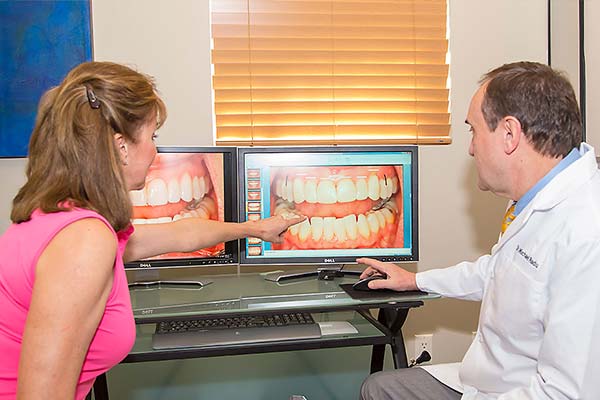A multiple-part blog on what to look for in a dentist, by Daniel Radu DMD – June 2016
Good dentistry is hard to define, especially to non-dentists. Dentistry stands out as a service that can leave the patient largely in the dark as to what to look for. It’s certainly not a product (like a book, for example: A book, is a book, is a book... no matter where you get it, or how much you pay for it). As a service, dentistry is invasive, and oftentimes costly. So let’s delve into this subject. I’m dividing this blog into a few different sections so as not to overwhelm you and to emphasize different subjects.
The Right Stuff – The Patient’s Side
Tell me if this sounds familiar – you head to the car mechanic (insert here: contractor, marketing consultant, pool guy, window specialist, roofing company, etc), and are told you need something done. You’re told it will be some extra money, but that you need it and will have problems if you don’t get it. Hesitant, you try to ask some questions to try to figure out if this is truly an issue, and figure out if you are being ‘taken for a ride.’ But in the end, unless you have the experience to understand the issue at hand, you have to take a leap of faith.
We simply can’t be specialists in every facet of every profession. It’s unfortunate, but we are generally only capable of having a little knowledge of a lot of things (unless you’re a modern day Leonardo DaVinci). So we are left in the dark as to what we truthfully need, what we can hold off on, and what is definitely unnecessary. The ‘specialist’ in the field, whichever field it may be, uses his expertise to (hopefully) tell us what we need. This is what I like to call the asymmetry of knowledge, and it is as prevalent in dentistry as any other profession. You, the patient, only have a little (if any!) knowledge about teeth, gums, infections, root canals, crowns, etc., while the dentist has all (ok, well… a very high level) of the knowledge.
I believe it’s incredibly important for the dentist to try to bridge this gap. If a dentist truly looks to create a trusting relationship, where the patient can know he or she is being treated the right way (we’ll get into what that means later), then he or she must guide the patient across this divide.
Bridging The Gap
How can you know your dentist is bridging this gap? Simple: you feel like you understand what’s going on with your mouth, what your options are, what the possible consequences may be in the future, and how to solve the problems that are going on! You basically get a “crash course” in dentistry, focused on the problems of your own mouth. If you are at all confused, unsure, or feel rushed out of the chair, then the dentist’s job simply isn’t done. Now clearly, a 5-minute crash course in dentistry, a subject that we spend 4 years of graduate learning, and then a lifetime of developing skills in, is not truly going to cut it. This is where trust, something that is so important in ANY relationship, comes into play. Trust can be a substitute for knowledge. Developing a relationship built on trust with your dentist allows you the peace of mind that your dentist is doing what is best for you, even if you don’t completely understand what may be going on. Clearly this kind of relationship isn’t formed overnight, but it is priceless once you’ve established it.
Good dentistry means a lot of different things to different people. It could mean just getting out of pain, or getting a clean bill of dental health and keeping up with cleanings, or getting the beautiful smile that they envision. In looking to elaborate on what it means, here’s what good dentistry means to us, on the patient’s side.
Good dentistry means that the patient is:
- taking part in the treatment planning process
- listened to and feel that their problems are understood
- comfortable, and not feeling rushed out of the chair
- not in pain during the procedure
While these are somewhat intangible, objective things, you as the patient, know it when you have it. A dental experience these days does not have to be an unpleasant experience, as it used to many, many years ago. With modern technology and techniques that are proven to work, the dentist can make your experience painless and comfortable. Your dental visit should almost feel like a time to kick back and relax.
In the next blog, I’ll go into what the dentist’s side of good dentistry looks like – technology, continuing education, labs, and more.




